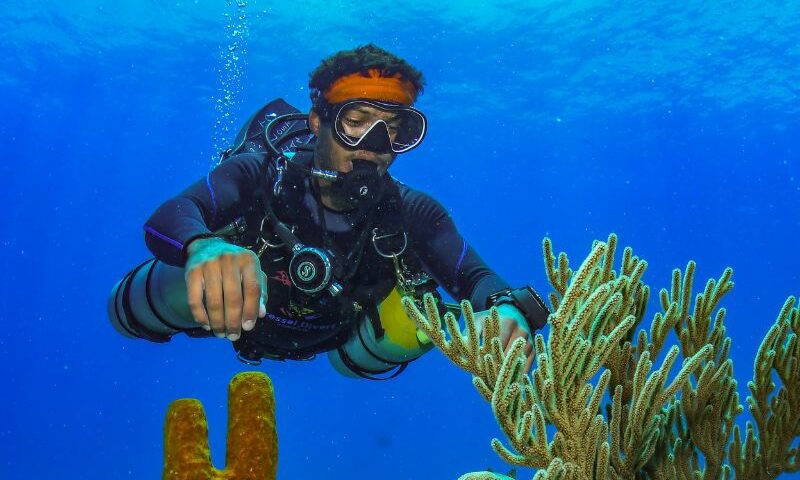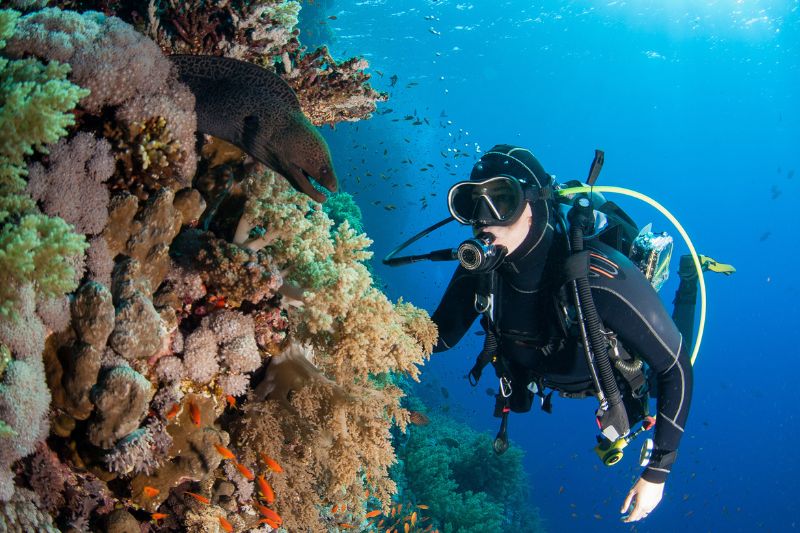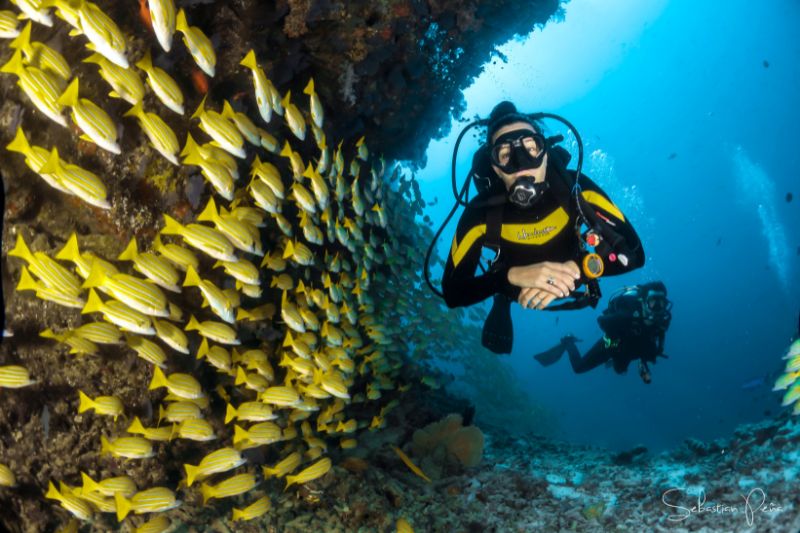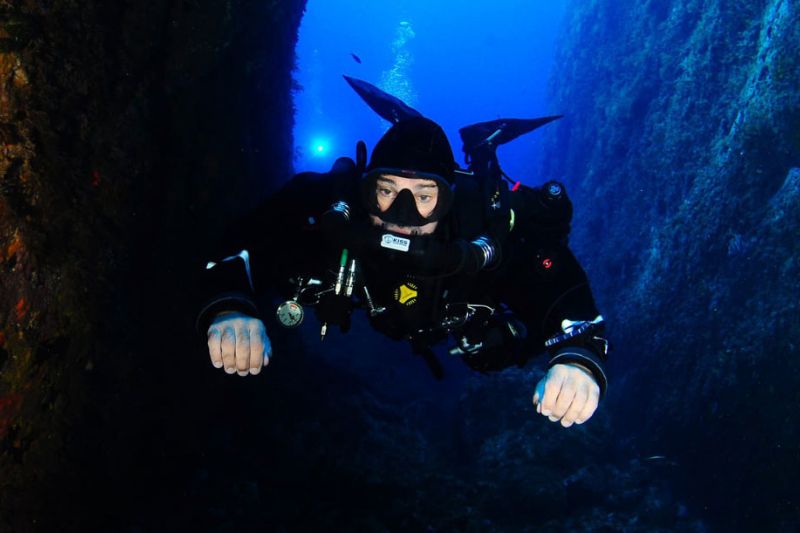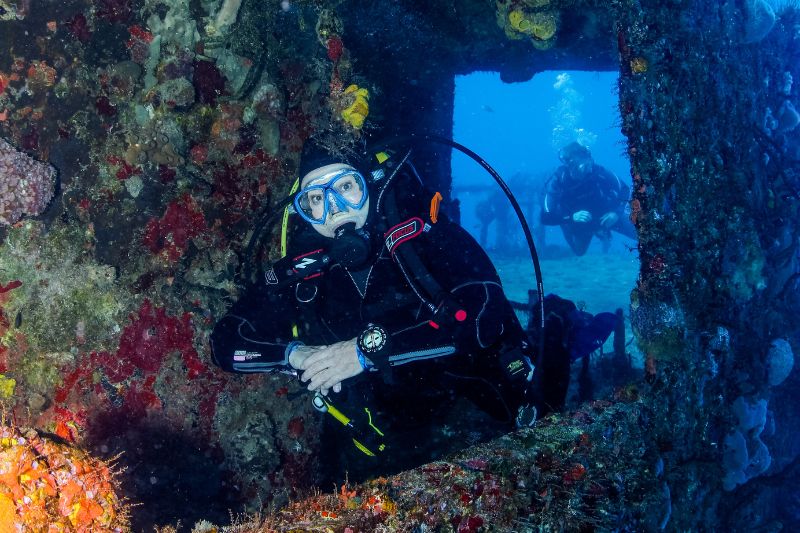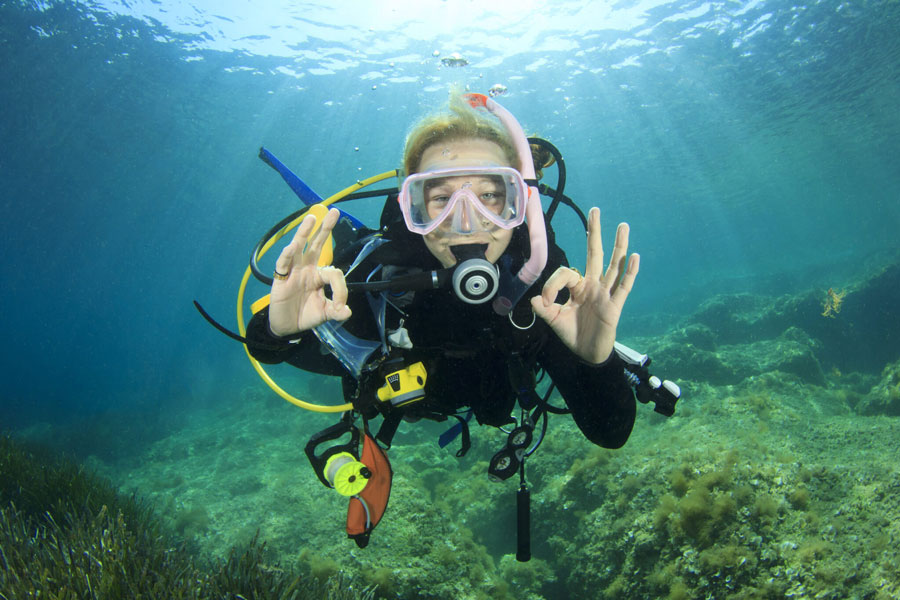“Do I really need the Peak Performance Buoyancy course? Please, I already float just fine…”
Look, buoyancy control isn’t just about not smashing the coral with your fins.
It’s about whether you enjoy diving as a relaxed, fluid experience, or just endure it while burning through your tank like it’s a sprint.
It’s about whether your gear is working with you… or totally sabotaging you.
Yeah, yeah, I know what you’re thinking:
“I’m already an advanced diver. Why would I bother with the Peak Performance Buoyancy course if my buoyancy is decent?”
I get it.
I used to think the same thing. The diver’s ego is a real thing, and a heavy one.
We all wear it right under our wetsuit, snug as that extra lead weight we swear, we “might need.”
We assume we’ve nailed peak buoyancy performance just because the dive guide hasn’t called us out.
But come on, that poor guide’s just trying to survive the day with what they’ve got, and today, that’s you. If you’re lucky, they’ll throw in a polite tip or two, just soft enough not to bruise your ego.
But other divers? They don’t have to buddy up with you.
And in my case, they started avoiding it.
As I tried to join more advanced dives, I noticed the divers with great buoyancy control weren’t exactly lining up to partner with me.
And who could blame them?
Every time I breathed, I did that awkward up-and-down bounce.
My trim? Anything but horizontal.
And don’t get me started on my tank, it ran out way faster than theirs.
Because here’s the truth:
It’s one thing to not crash into the reef.
It’s a whole other level to master perfect peak performance buoyancy, with horizontal trim, proper weighting, and no inflating your BCD every ten seconds.
No excess lead.
No yo-yo movements.
Just gliding like you belong down there.
This is performance scuba. It’s a game-changer, for your air consumption, your underwater photos, even your social life in the dive community.
So, let’s cut to the chase.
Is the Peak Performance Buoyancy PADI course, or SDI’s version, or whatever agency you choose, actually worth it?
Let’s give the giant stride.




